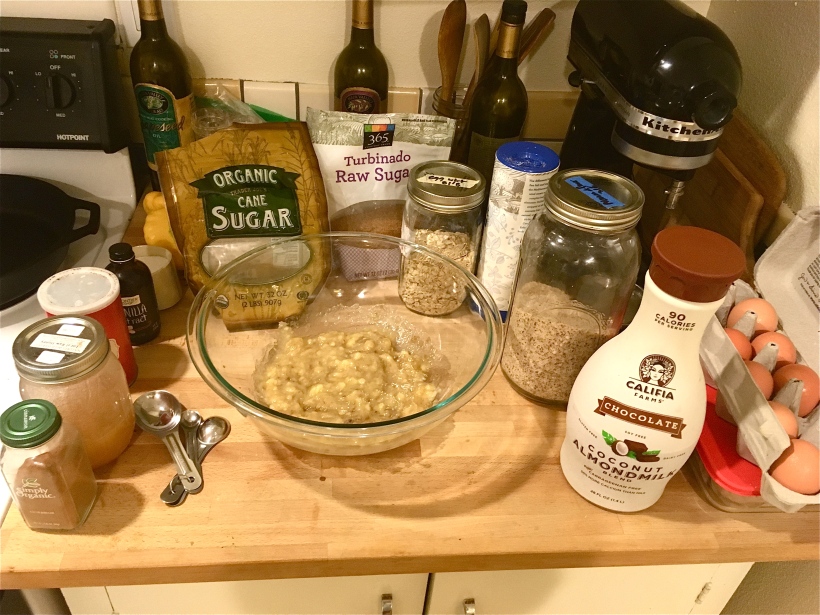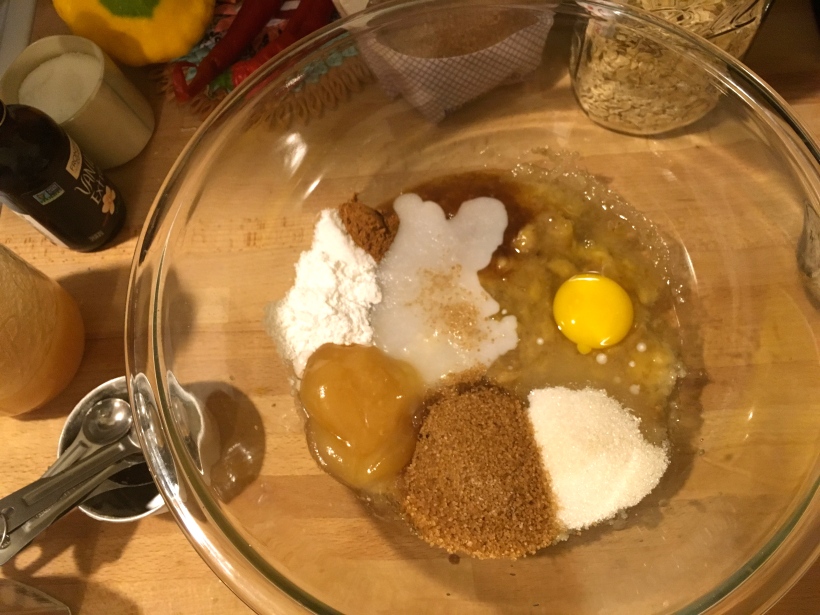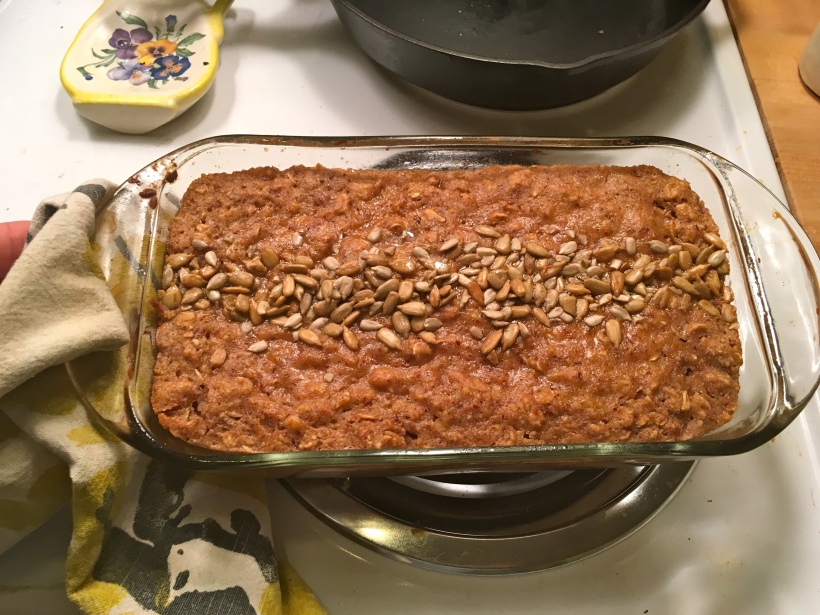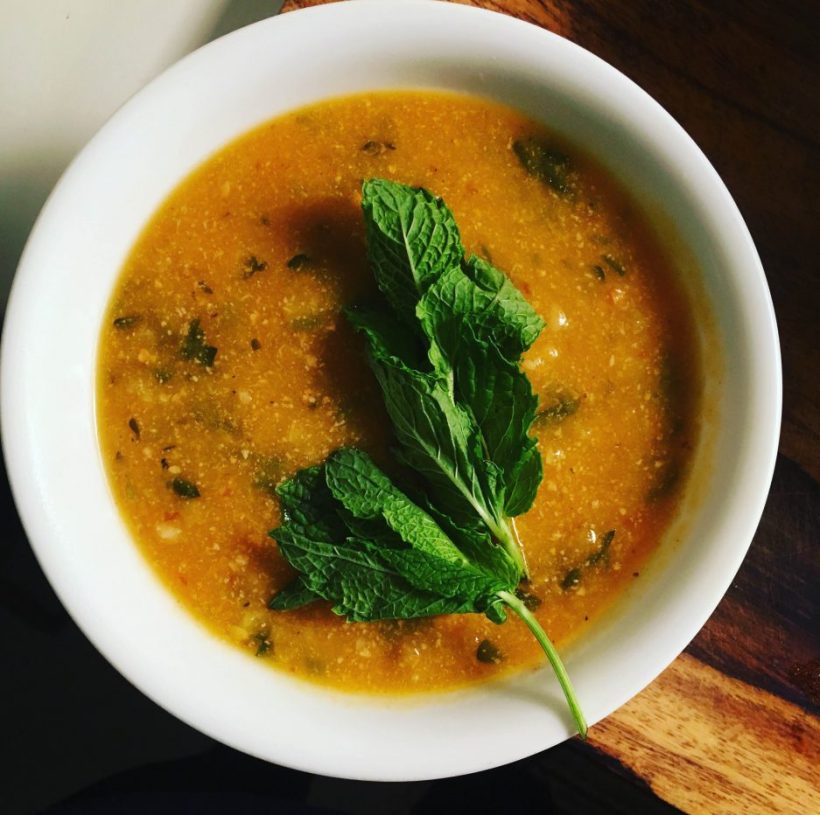My next assignment was to bake any bread or pastry with a leavening agent. This was after our class with one of my favorite bakers, Annie Moss, of Seastar Bakery, here in Portland, Or. While I have been trying not to eat much gluten lately for my digestive condition, Annie also inspires me to experiment outside of that box with more uncommonly used whole grain flours, such as whole wheat pastry, kamut®, triticale, and Maris Widgeon, explaining that when we eat white flour we are basically eating “concentrated gluten.” She encourages sourcing locally, so that we can help to build and support a thriving local food system which includes a diversity of healthful grains. She recommends checking out Green Willow Grains as well as Camas Country Mill.
This is Annie:

Annie describes baked goods as “delicious balloons inflated with delicious air.” She describes how leavening agents are what fill up those balloons with air. San Francisco’s Exploratorium museum’s website contains a neat little section on the science of cooking, and explains here how it works:
“baking powder and baking soda both produce carbon dioxide, which helps raise or “leaven” baked products … Baking soda works best in conjunction with an acidic ingredient … Recipes generally include just enough baking soda to balance the acidity in the batter … Baking powder contains both baking soda and a dry acidic ingredient. Since it isn’t dependent on acid ingredients in the batter, it is used to add the extra leavening necessary to raise … recipes like banana bread which contain heavy ingredients, such as bananas and sometimes heavy grains like wheat germ or whole wheat flour”
I decided to pick a recipe that uses baking soda or powder rather than a quick yeast or sourdough starter, as a personal preference. Also, I had been wanting to try out a recipe from local food-blogger, Dana Schultz, of Minimalist Baker, and thought that this would be a perfect time to do so. I chose her One Bowl Gluten Free Banana Bread recipe to start with and decided to modify it to include some whole-grain action.
I’ll walk you through what I did:









We let the loaf rest for 2o minutes and then we cut in!

Yum!! This bread is glorious! It is rich and hearty, and has so much banana flavor. It tastes healthy, in a very GOOD way! I definitely recommend you give this (and any of Dana’s recipes at Minimalist Baker) a try.
One thing I did notice about our loaf is that it stayed pretty moist, which while delicious, is also somewhat harder to slice and serve. I spoke with my neighbor Jaimes, who works for Ken’s Artisan Bakery about this. He asked if I was using any starches in my batter. When I said no, he explained that the ingredients usually found in gluten-free flour blends, such as tapioca or potato starches, help to create a more delicate crumb.
Ahhh! Thanks for the info, Jaimes!! Maybe next time I will try Dana’s recipe AS-IS, just to see what a difference it makes.
Well, thank you for coming along on this baking journey with me! I hope you learned a thing or two. Also, feel free to share with me any tips and tricks that you may have for baking and beyond. Until next time, happy cooking and eating y’all!!

xoxoxo
 As an assignment for one of my classes this term, we were asked to visit the farmer’s market to acquire something we hadn’t cooked with before. I was excited about the assignment as I LOVE the farmer’s market … any shape or size, I’m into it.
As an assignment for one of my classes this term, we were asked to visit the farmer’s market to acquire something we hadn’t cooked with before. I was excited about the assignment as I LOVE the farmer’s market … any shape or size, I’m into it.